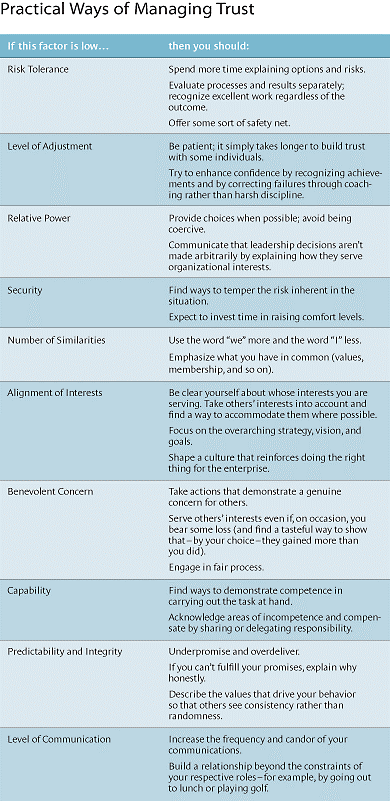
Creating a Culture of Trust in the Workplace
When organizations face tough, unpredictable times, it’s easy to blame a specific leader’s professional traits. When this happens, you might hear complaints about the leader, such as “She’s too rigid.” or “He’s in his ivory tower and doesn’t see what we deal with every single day.” Remember, most people complain the symptoms, not the root cause, of a problem. In many cases, the real issue to investigate is if the team trusts the leader, not the leader’s specific traits.
Trust is at the crux of how an organization’s culture forms. As this article points out, employees who are an unable to trust their leaders, team or organization can cause expensive problems.
Hurley makes an excellent point in his article, The Decision to Trust: “When asked how a high-trust work environment feels, the participants most frequently say ‘fun,’ ‘supportive,’ ‘motivating,’ ‘productive,’ and ‘comfortable.’” When asked, “to describe how a working environment feels when it is characterized by low levels of trust. The most frequent responses include ‘stressful,’ ‘threatening,’ ‘divisive,’ ‘unproductive,’ and ‘tense.’”
Hurley elaborates on an excellent model of trust that a “trustee” and “truster” can engage in to identify where steps can be taken to develop a foundation for trust and to understand why distrust may exist in their organization. He identifies 10 factors at play, which are paired with practical tips below.

Take the time to evaluate the level of trust within your organization. Are there steps you can take to minimize distrust?


